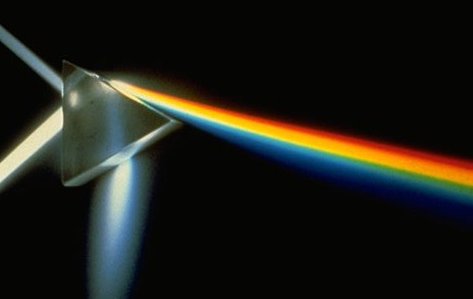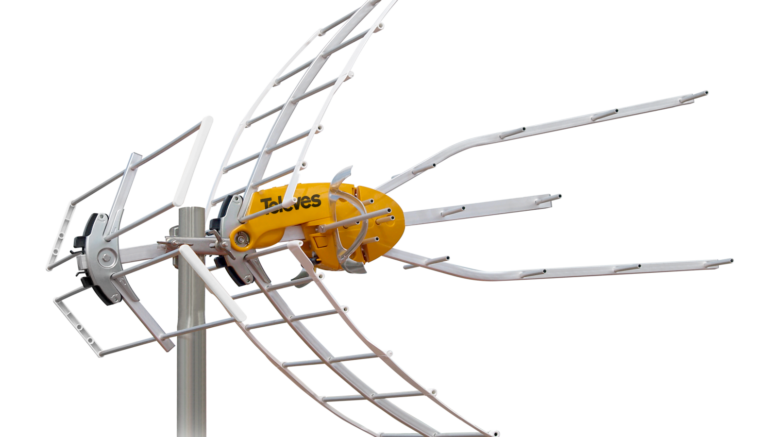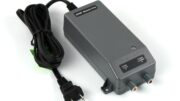The laws of physics didn’t change when TV went digital. Digital TV made things a lot better for a lot of reasons, but no amount of computer processing power can change some basic properties of radio transmission. One of those is the principle of multipath interference.
What is multipath interference?
In order to understand multipath interference, we have to start with some simple physics. Physics isn’t scary, it’s just the study of the math behind everyday things. Physics tells us, for example, that light always travels at the same speed if it’s traveling through the same thing. Rainbows happen when light bends around something that makes some of it slow down.

What’s true of light is also true of radio and television transmissions. That’s because all radiation is basically the same. Some of it, like light, is visible. Some of it, like TV transmissions, is invisible.
Because TV transmissions are like light, TV transmissions that travel further will take longer to get to your home. Signals come from a broadcast tower and they go out in all directions. Some of them head toward neighboring cities, some toward neighboring hills, and some go straight to your home. The problem is, the signals don’t stop. Instead, they bounce.
Here’s an example. TV broadcasts come from one place. Let’s say it’s near a major city. Some of the signals bounce off a building and head to your home. Some of them bounce off a nearby hillside or mountain, and head to your home. Then, there are the signals that come straight to your home.
In the example above, the signal travels 3 different distances. So… since we know that the speed is the same and the distance is difference, your antenna picks up the same signal three different times. The result is multipath interference.
What multipath looks like

On an older TV, multipath interference looks like double images or ghosts. It was a much bigger problem with analog TV, because older TVs don’t have the complex processing power to try to eliminate multipath problems. Newer TVs with digital tuners are not as sensitive to multipath, because they can process the signal and try to figure out which is the strongest part of the signal and ignore the rest. With digital TV, multipath can go completely unnoticed, or it can cause weird breakups like the one you see above.
What to do
If you have multipath interference, there are several steps you can take. First, go to your antenna and look in the direction of the broadcast towers. Is there anything in the way, like a tree? Make sure the strongest signal has a clear path to your antenna.
Sometimes, rotating your antenna can eliminate multipath by making it harder for your antenna to see the weaker, bounced signals. In some cases, even rotating your antenna 45 or 90 degrees off axis can work, but this is rare.
If you have multipath problems, you can consider a pad (a variable attenuator.) When you’re that close, the bounced signal can be so strong that they overpower the signal straight from the tower. Try something like this attenuator which is an inexpensive way to cut the strength of the signal coming into your TV. Connect it between your antenna and your TV. If you still have the problem you can add more of them until either the problem goes away or you lose signal.
Another option is to use a more directional antenna like the one pictured at the top of this article. If you use a more directional antenna and aim carefully, you may find that the TV is better able to distinguish between the strong primary signal and a weaker multipath signal.
If nothing else can work, some people will tell you to try putting a second antenna up. A little bit of experimentation will help you find the spot where the multipath interference is coming from. Use a combiner to connect the two. Almost any splitter will work for this purpose, like this one. It’s worth noting that in cases like this you should stay away from amplified combiners as they will make the matter worse. There are mathematical formulas to try to help you position the second antenna, but in reality, some time spent on the roof with a friend or partner watching the TV can work just as well. The key is to use two antennas that are identical and try to keep the setups as similar as possible. Still, this might be the avenue of last resort as it’s possible that it won’t help at all.
Sure, multipath interference isn’t as obvious of a problem as it used to be, but that isn’t going to make you feel better if you still have it. If you’re burdened by multipath problems, or if you think you are, start with the small changes and eventually work up to the more expensive and time-consuming solutions.
Still having problems?
If you’re still having problems, you can call the experts for some great advice. We’re here during East Coast business hours. Call us at 888-233-7563. If it’s after hours, fill out the form below. We’ll get back to you, usually within one business day!
.





